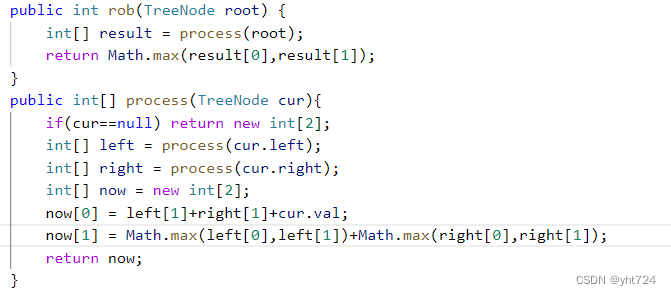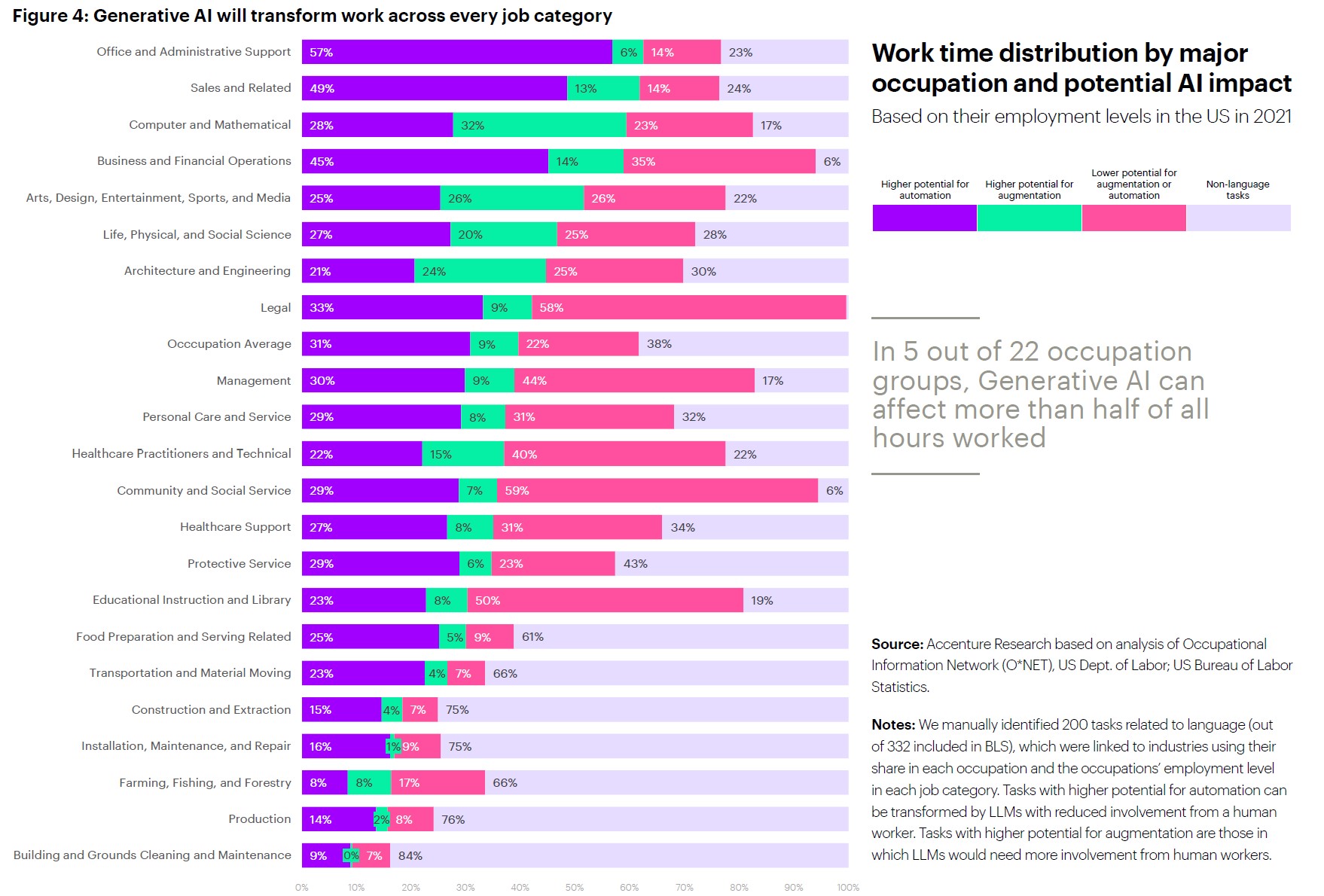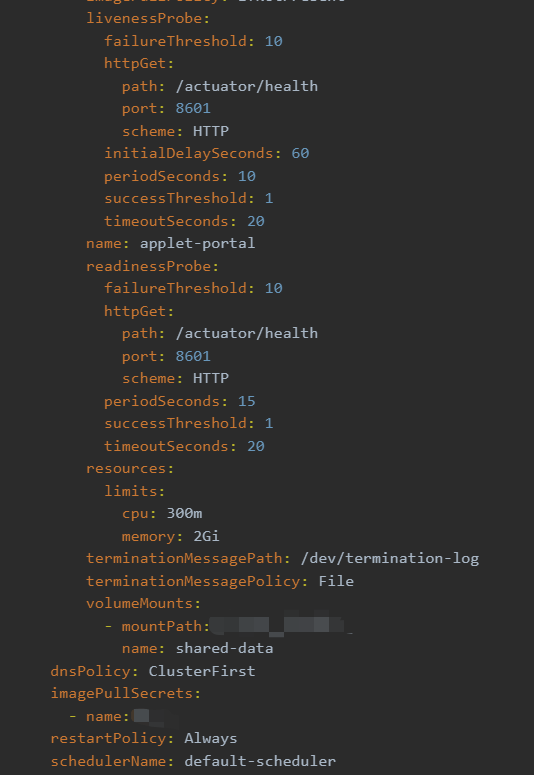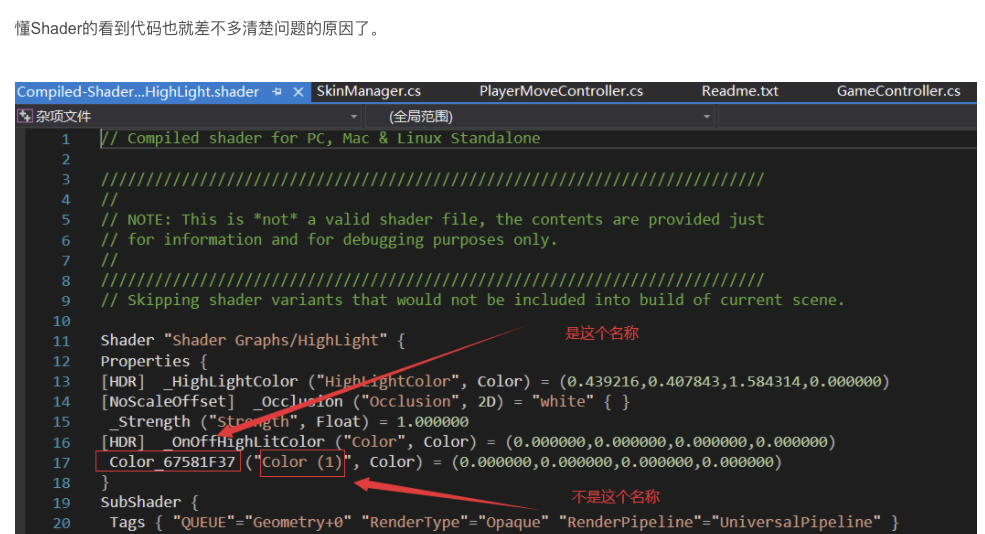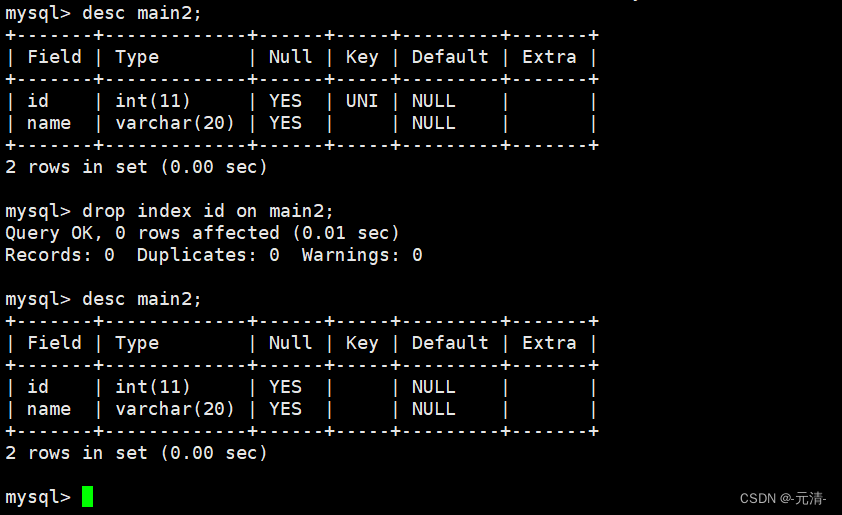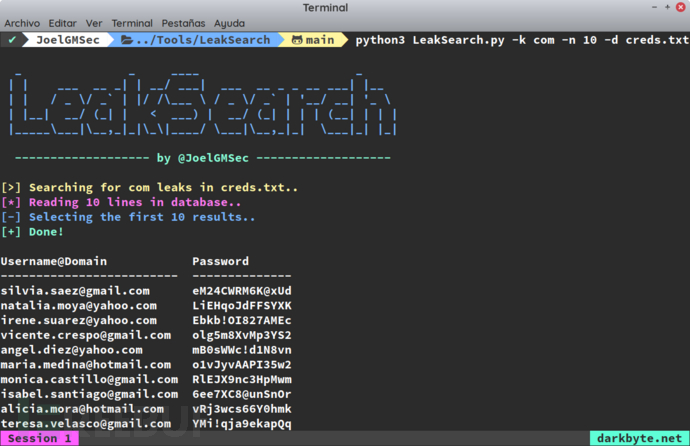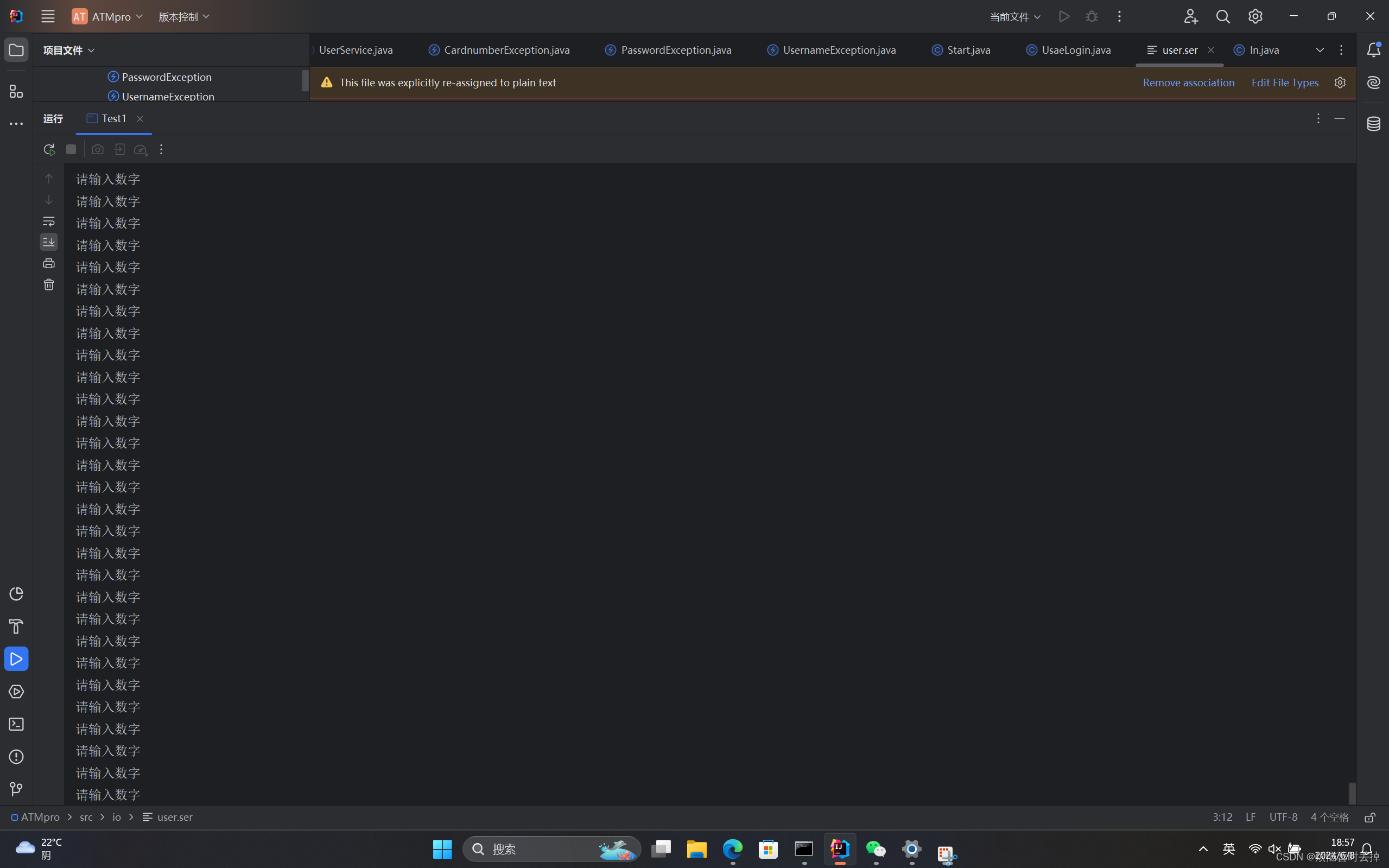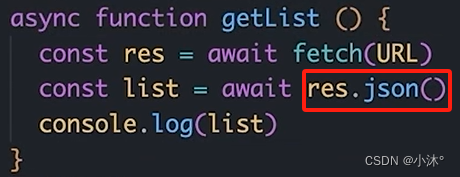〇、前言
相比YOLOv5/v7,除了YOLOv5n外,YOLOv7tiny的参数量较小,效果往往也相较YOLOv5n高上不少,又近来博主打算改进yolov7-tiny文件,但苦于其池化层部位是直接写在yaml中的,修改极为不便,因此对池化层做简化处理。
本次修改的目标是将yaml中池化层的代码修改为单层代码形式来代表,便于以后做替换、改进工作,因此,需要保证改进前后的参数量、GFLOPS相同。
此外,可能有小伙伴会疑问,为何博主不推荐把所有部位都简化?这是因为某些修改常常会修改于1x1的卷积,而不修改3x3的卷积;同理,亦有修改3x3的卷积,而不修改1x1的卷积的,除此之外,一篇结构中,并不是所有部位都用一种激活函数就好,很多时候需要不同部位采用不同激活函数,既然YOLOv7-tiny原版也保留该函数,那么博主也进行保留。同时,这么做更适合初学者理解,更为直观。所以博主更推荐大家只修改池化层的代码,这样也便于后续更细化地进行改进网络结构的工作。
接下来博主将会更新YOLOv5/v7的池化层改进代码,预计每篇修改1-2个池化层,尽量更新好目前常见且有效的代码,小伙伴们可关注博主后,以此篇代码为基础,进行进一步修改工作。
一、导言
池化层(Pooling Layer)是卷积神经网络(Convolutional Neural Networks, CNNs)中的一个重要组成部分,主要用于减少输入数据的空间尺寸(例如,图像的宽度和高度),同时保持其最重要的信息。这一过程称为下采样(downsampling)或者降维。池化操作通过提取特征图(feature maps)的摘要信息来实现,这些摘要信息通常是原特征的统计量,如最大值、平均值或其他聚合方式的结果。
池化层在目标检测中的作用至关重要,主要体现在以下几个方面:
-
位置不变性:池化操作(如最大池化或平均池化)可以降低网络对输入图像中特征位置的敏感度。这意味着即使目标在图像中的位置有所变动,池化层依然能够帮助网络捕捉到这些目标,增强模型的空间不变性。
-
特征降维:通过将输入特征图划分成多个小区域并对其进行聚合(如取最大值或平均值),池化层能够显著减少数据的维度,从而减少计算量和内存需求,加快训练速度,同时也降低了过拟合的风险。
-
特征选择:特别是在最大池化中,网络会选取每个区域中最显著的特征,这有助于提取图像中的关键信息,忽略不重要的细节,使得模型更加关注目标的显著特征。
-
固定大小的输出:在某些目标检测框架中,如Fast R-CNN中使用的ROI Pooling,池化层能够将不同大小和形状的候选区域(Regions of Interest, RoIs)转化为固定大小的特征图,这对于后续的全连接层处理是非常必要的,因为全连接层通常需要固定尺寸的输入。
-
多尺度特征:空间金字塔池化(Spatial Pyramid Pooling, SPP)等技术可以在不同尺度上进行池化,从而在单个模型中整合多尺度特征,这对于检测不同大小的目标尤为重要。
综上所述,池化层不仅提高了模型的效率和泛化能力,也为处理目标检测任务中的核心挑战提供了有效的解决方案。
二、准备工作
首先在YOLOv7的models文件夹下导入如下代码
##### yolov7-tiny-simplify mode #####
class v7tiny_SPP(nn.Module):
def __init__(self, c1, c2, n=1, shortcut=False, g=1, e=0.5, k=(5, 9, 13), act=True):
super(v7tiny_SPP, self).__init__()
c_ = int(2 * c2 * e) # hidden channels
self.cv1 = Conv(c1, c_, 1, 1)
self.cv2 = Conv(c1, c_, 1, 1)
self.m = nn.ModuleList([nn.MaxPool2d(kernel_size=x, stride=1, padding=x // 2) for x in k])
self.cv3 = Conv(4 * c_, c_, 1, 1)
self.cv4 = Conv(2 * c_, c2, 1, 1)
#self.act = nn.LeakyReLU() if act is True else (act if isinstance(act, nn.Module) else nn.Identity())
def forward(self, x):
x1 = self.cv1(x)
x2 = self.cv2(x)
x3 = torch.cat([x2] + [m(x2) for m in self.m], 1)
x4 = self.cv3(x3)
x5 = torch.cat((x1, x4), 1)
return self.cv4(x5)
##### yolov7-tiny-simplify mode end #####其次在在YOLOv7项目文件下的models/yolo.py中搜索def parse_model(d, ch)
定位到如下行添加以下代码
v7tiny_SPP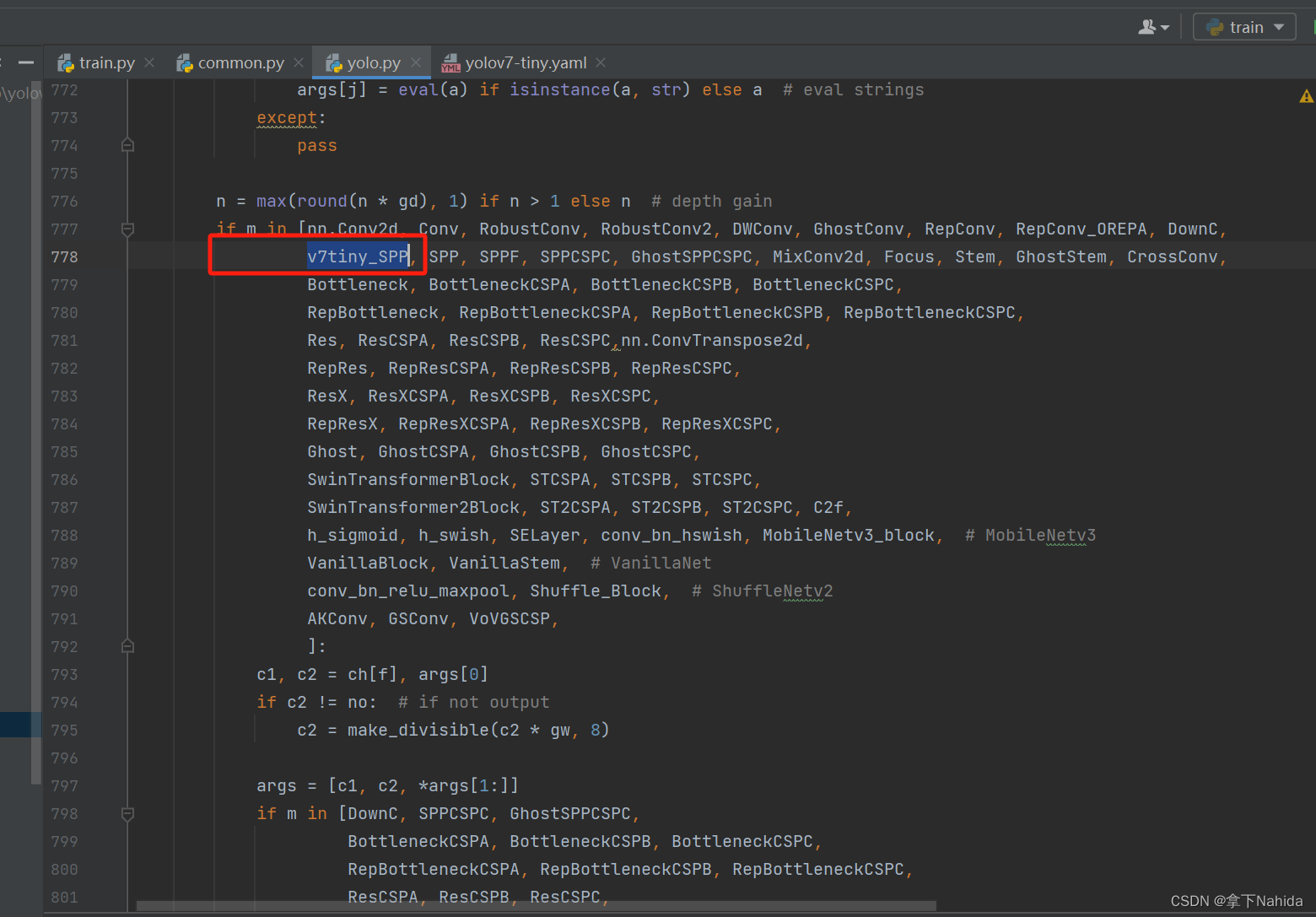
三、YOLOv7-tiny改进工作
完成二后,在YOLOv7项目文件下的models文件夹下创建新的文件yolov7-tinynew.yaml,导入如下代码。
# parameters
nc: 80 # number of classes
depth_multiple: 1.0 # model depth multiple
width_multiple: 1.0 # layer channel multiple
# anchors
anchors:
- [10,13, 16,30, 33,23] # P3/8
- [30,61, 62,45, 59,119] # P4/16
- [116,90, 156,198, 373,326] # P5/32
# yolov7-tiny backbone
backbone:
# [from, number, module, args] c2, k=1, s=1, p=None, g=1, act=True
[[-1, 1, Conv, [32, 3, 2, None, 1, nn.LeakyReLU(0.1)]], # 0-P1/2
[-1, 1, Conv, [64, 3, 2, None, 1, nn.LeakyReLU(0.1)]], # 1-P2/4
[-1, 1, Conv, [32, 1, 1, None, 1, nn.LeakyReLU(0.1)]],
[-2, 1, Conv, [32, 1, 1, None, 1, nn.LeakyReLU(0.1)]],
[-1, 1, Conv, [32, 3, 1, None, 1, nn.LeakyReLU(0.1)]],
[-1, 1, Conv, [32, 3, 1, None, 1, nn.LeakyReLU(0.1)]],
[[-1, -2, -3, -4], 1, Concat, [1]],
[-1, 1, Conv, [64, 1, 1, None, 1, nn.LeakyReLU(0.1)]], # 7
[-1, 1, MP, []], # 8-P3/8
[-1, 1, Conv, [64, 1, 1, None, 1, nn.LeakyReLU(0.1)]],
[-2, 1, Conv, [64, 1, 1, None, 1, nn.LeakyReLU(0.1)]],
[-1, 1, Conv, [64, 3, 1, None, 1, nn.LeakyReLU(0.1)]],
[-1, 1, Conv, [64, 3, 1, None, 1, nn.LeakyReLU(0.1)]],
[[-1, -2, -3, -4], 1, Concat, [1]],
[-1, 1, Conv, [128, 1, 1, None, 1, nn.LeakyReLU(0.1)]], # 14
[-1, 1, MP, []], # 15-P4/16
[-1, 1, Conv, [128, 1, 1, None, 1, nn.LeakyReLU(0.1)]],
[-2, 1, Conv, [128, 1, 1, None, 1, nn.LeakyReLU(0.1)]],
[-1, 1, Conv, [128, 3, 1, None, 1, nn.LeakyReLU(0.1)]],
[-1, 1, Conv, [128, 3, 1, None, 1, nn.LeakyReLU(0.1)]],
[[-1, -2, -3, -4], 1, Concat, [1]],
[-1, 1, Conv, [256, 1, 1, None, 1, nn.LeakyReLU(0.1)]], # 21
[-1, 1, MP, []], # 22-P5/32
[-1, 1, Conv, [256, 1, 1, None, 1, nn.LeakyReLU(0.1)]],
[-2, 1, Conv, [256, 1, 1, None, 1, nn.LeakyReLU(0.1)]],
[-1, 1, Conv, [256, 3, 1, None, 1, nn.LeakyReLU(0.1)]],
[-1, 1, Conv, [256, 3, 1, None, 1, nn.LeakyReLU(0.1)]],
[[-1, -2, -3, -4], 1, Concat, [1]],
[-1, 1, Conv, [512, 1, 1, None, 1, nn.LeakyReLU(0.1)]], # 28
]
# yolov7-tiny head
head:
[[-1, 1, v7tiny_SPP, [256]], # 29
[-1, 1, Conv, [128, 1, 1, None, 1, nn.LeakyReLU(0.1)]],
[-1, 1, nn.Upsample, [None, 2, 'nearest']],
[21, 1, Conv, [128, 1, 1, None, 1, nn.LeakyReLU(0.1)]], # route backbone P4
[[-1, -2], 1, Concat, [1]],
[-1, 1, Conv, [64, 1, 1, None, 1, nn.LeakyReLU(0.1)]],
[-2, 1, Conv, [64, 1, 1, None, 1, nn.LeakyReLU(0.1)]],
[-1, 1, Conv, [64, 3, 1, None, 1, nn.LeakyReLU(0.1)]],
[-1, 1, Conv, [64, 3, 1, None, 1, nn.LeakyReLU(0.1)]],
[[-1, -2, -3, -4], 1, Concat, [1]],
[-1, 1, Conv, [128, 1, 1, None, 1, nn.LeakyReLU(0.1)]], # 39
[-1, 1, Conv, [64, 1, 1, None, 1, nn.LeakyReLU(0.1)]],
[-1, 1, nn.Upsample, [None, 2, 'nearest']],
[14, 1, Conv, [64, 1, 1, None, 1, nn.LeakyReLU(0.1)]], # route backbone P3
[[-1, -2], 1, Concat, [1]],
[-1, 1, Conv, [32, 1, 1, None, 1, nn.LeakyReLU(0.1)]],
[-2, 1, Conv, [32, 1, 1, None, 1, nn.LeakyReLU(0.1)]],
[-1, 1, Conv, [32, 3, 1, None, 1, nn.LeakyReLU(0.1)]],
[-1, 1, Conv, [32, 3, 1, None, 1, nn.LeakyReLU(0.1)]],
[[-1, -2, -3, -4], 1, Concat, [1]],
[-1, 1, Conv, [64, 1, 1, None, 1, nn.LeakyReLU(0.1)]], # 49
[-1, 1, Conv, [128, 3, 2, None, 1, nn.LeakyReLU(0.1)]],
[[-1, 39], 1, Concat, [1]],
[-1, 1, Conv, [64, 1, 1, None, 1, nn.LeakyReLU(0.1)]],
[-2, 1, Conv, [64, 1, 1, None, 1, nn.LeakyReLU(0.1)]],
[-1, 1, Conv, [64, 3, 1, None, 1, nn.LeakyReLU(0.1)]],
[-1, 1, Conv, [64, 3, 1, None, 1, nn.LeakyReLU(0.1)]],
[[-1, -2, -3, -4], 1, Concat, [1]],
[-1, 1, Conv, [128, 1, 1, None, 1, nn.LeakyReLU(0.1)]], # 57
[-1, 1, Conv, [256, 3, 2, None, 1, nn.LeakyReLU(0.1)]],
[[-1, 29], 1, Concat, [1]],
[-1, 1, Conv, [128, 1, 1, None, 1, nn.LeakyReLU(0.1)]],
[-2, 1, Conv, [128, 1, 1, None, 1, nn.LeakyReLU(0.1)]],
[-1, 1, Conv, [128, 3, 1, None, 1, nn.LeakyReLU(0.1)]],
[-1, 1, Conv, [128, 3, 1, None, 1, nn.LeakyReLU(0.1)]],
[[-1, -2, -3, -4], 1, Concat, [1]],
[-1, 1, Conv, [256, 1, 1, None, 1, nn.LeakyReLU(0.1)]], # 65
[49, 1, Conv, [128, 3, 1, None, 1, nn.LeakyReLU(0.1)]],
[57, 1, Conv, [256, 3, 1, None, 1, nn.LeakyReLU(0.1)]],
[65, 1, Conv, [512, 3, 1, None, 1, nn.LeakyReLU(0.1)]],
[[66, 67, 68], 1, IDetect, [nc, anchors]], # Detect(P3, P4, P5)
]
运行后,打印如下代码
from n params module arguments
0 -1 1 928 models.common.Conv [3, 32, 3, 2, None, 1, LeakyReLU(negative_slope=0.1)]
1 -1 1 18560 models.common.Conv [32, 64, 3, 2, None, 1, LeakyReLU(negative_slope=0.1)]
2 -1 1 2112 models.common.Conv [64, 32, 1, 1, None, 1, LeakyReLU(negative_slope=0.1)]
3 -2 1 2112 models.common.Conv [64, 32, 1, 1, None, 1, LeakyReLU(negative_slope=0.1)]
4 -1 1 9280 models.common.Conv [32, 32, 3, 1, None, 1, LeakyReLU(negative_slope=0.1)]
5 -1 1 9280 models.common.Conv [32, 32, 3, 1, None, 1, LeakyReLU(negative_slope=0.1)]
6 [-1, -2, -3, -4] 1 0 models.common.Concat [1]
7 -1 1 8320 models.common.Conv [128, 64, 1, 1, None, 1, LeakyReLU(negative_slope=0.1)]
8 -1 1 0 models.common.MP []
9 -1 1 4224 models.common.Conv [64, 64, 1, 1, None, 1, LeakyReLU(negative_slope=0.1)]
10 -2 1 4224 models.common.Conv [64, 64, 1, 1, None, 1, LeakyReLU(negative_slope=0.1)]
11 -1 1 36992 models.common.Conv [64, 64, 3, 1, None, 1, LeakyReLU(negative_slope=0.1)]
12 -1 1 36992 models.common.Conv [64, 64, 3, 1, None, 1, LeakyReLU(negative_slope=0.1)]
13 [-1, -2, -3, -4] 1 0 models.common.Concat [1]
14 -1 1 33024 models.common.Conv [256, 128, 1, 1, None, 1, LeakyReLU(negative_slope=0.1)]
15 -1 1 0 models.common.MP []
16 -1 1 16640 models.common.Conv [128, 128, 1, 1, None, 1, LeakyReLU(negative_slope=0.1)]
17 -2 1 16640 models.common.Conv [128, 128, 1, 1, None, 1, LeakyReLU(negative_slope=0.1)]
18 -1 1 147712 models.common.Conv [128, 128, 3, 1, None, 1, LeakyReLU(negative_slope=0.1)]
19 -1 1 147712 models.common.Conv [128, 128, 3, 1, None, 1, LeakyReLU(negative_slope=0.1)]
20 [-1, -2, -3, -4] 1 0 models.common.Concat [1]
21 -1 1 131584 models.common.Conv [512, 256, 1, 1, None, 1, LeakyReLU(negative_slope=0.1)]
22 -1 1 0 models.common.MP []
23 -1 1 66048 models.common.Conv [256, 256, 1, 1, None, 1, LeakyReLU(negative_slope=0.1)]
24 -2 1 66048 models.common.Conv [256, 256, 1, 1, None, 1, LeakyReLU(negative_slope=0.1)]
25 -1 1 590336 models.common.Conv [256, 256, 3, 1, None, 1, LeakyReLU(negative_slope=0.1)]
26 -1 1 590336 models.common.Conv [256, 256, 3, 1, None, 1, LeakyReLU(negative_slope=0.1)]
27 [-1, -2, -3, -4] 1 0 models.common.Concat [1]
28 -1 1 525312 models.common.Conv [1024, 512, 1, 1, None, 1, LeakyReLU(negative_slope=0.1)]
29 -1 1 657408 models.common.v7tiny_SPP [512, 256]
30 -1 1 33024 models.common.Conv [256, 128, 1, 1, None, 1, LeakyReLU(negative_slope=0.1)]
31 -1 1 0 torch.nn.modules.upsampling.Upsample [None, 2, 'nearest']
32 21 1 33024 models.common.Conv [256, 128, 1, 1, None, 1, LeakyReLU(negative_slope=0.1)]
33 [-1, -2] 1 0 models.common.Concat [1]
34 -1 1 16512 models.common.Conv [256, 64, 1, 1, None, 1, LeakyReLU(negative_slope=0.1)]
35 -2 1 16512 models.common.Conv [256, 64, 1, 1, None, 1, LeakyReLU(negative_slope=0.1)]
36 -1 1 36992 models.common.Conv [64, 64, 3, 1, None, 1, LeakyReLU(negative_slope=0.1)]
37 -1 1 36992 models.common.Conv [64, 64, 3, 1, None, 1, LeakyReLU(negative_slope=0.1)]
38 [-1, -2, -3, -4] 1 0 models.common.Concat [1]
39 -1 1 33024 models.common.Conv [256, 128, 1, 1, None, 1, LeakyReLU(negative_slope=0.1)]
40 -1 1 8320 models.common.Conv [128, 64, 1, 1, None, 1, LeakyReLU(negative_slope=0.1)]
41 -1 1 0 torch.nn.modules.upsampling.Upsample [None, 2, 'nearest']
42 14 1 8320 models.common.Conv [128, 64, 1, 1, None, 1, LeakyReLU(negative_slope=0.1)]
43 [-1, -2] 1 0 models.common.Concat [1]
44 -1 1 4160 models.common.Conv [128, 32, 1, 1, None, 1, LeakyReLU(negative_slope=0.1)]
45 -2 1 4160 models.common.Conv [128, 32, 1, 1, None, 1, LeakyReLU(negative_slope=0.1)]
46 -1 1 9280 models.common.Conv [32, 32, 3, 1, None, 1, LeakyReLU(negative_slope=0.1)]
47 -1 1 9280 models.common.Conv [32, 32, 3, 1, None, 1, LeakyReLU(negative_slope=0.1)]
48 [-1, -2, -3, -4] 1 0 models.common.Concat [1]
49 -1 1 8320 models.common.Conv [128, 64, 1, 1, None, 1, LeakyReLU(negative_slope=0.1)]
50 -1 1 73984 models.common.Conv [64, 128, 3, 2, None, 1, LeakyReLU(negative_slope=0.1)]
51 [-1, 39] 1 0 models.common.Concat [1]
52 -1 1 16512 models.common.Conv [256, 64, 1, 1, None, 1, LeakyReLU(negative_slope=0.1)]
53 -2 1 16512 models.common.Conv [256, 64, 1, 1, None, 1, LeakyReLU(negative_slope=0.1)]
54 -1 1 36992 models.common.Conv [64, 64, 3, 1, None, 1, LeakyReLU(negative_slope=0.1)]
55 -1 1 36992 models.common.Conv [64, 64, 3, 1, None, 1, LeakyReLU(negative_slope=0.1)]
56 [-1, -2, -3, -4] 1 0 models.common.Concat [1]
57 -1 1 33024 models.common.Conv [256, 128, 1, 1, None, 1, LeakyReLU(negative_slope=0.1)]
58 -1 1 295424 models.common.Conv [128, 256, 3, 2, None, 1, LeakyReLU(negative_slope=0.1)]
59 [-1, 29] 1 0 models.common.Concat [1]
60 -1 1 65792 models.common.Conv [512, 128, 1, 1, None, 1, LeakyReLU(negative_slope=0.1)]
61 -2 1 65792 models.common.Conv [512, 128, 1, 1, None, 1, LeakyReLU(negative_slope=0.1)]
62 -1 1 147712 models.common.Conv [128, 128, 3, 1, None, 1, LeakyReLU(negative_slope=0.1)]
63 -1 1 147712 models.common.Conv [128, 128, 3, 1, None, 1, LeakyReLU(negative_slope=0.1)]
64 [-1, -2, -3, -4] 1 0 models.common.Concat [1]
65 -1 1 131584 models.common.Conv [512, 256, 1, 1, None, 1, LeakyReLU(negative_slope=0.1)]
66 49 1 73984 models.common.Conv [64, 128, 3, 1, None, 1, LeakyReLU(negative_slope=0.1)]
67 57 1 295424 models.common.Conv [128, 256, 3, 1, None, 1, LeakyReLU(negative_slope=0.1)]
68 65 1 1180672 models.common.Conv [256, 512, 3, 1, None, 1, LeakyReLU(negative_slope=0.1)]
69 [66, 67, 68] 1 17132 models.yolo.IDetect [1, [[10, 13, 16, 30, 33, 23], [30, 61, 62, 45, 59, 119], [116, 90, 156, 198, 373, 326]], [128, 256, 512]]
Model Summary: 261 layers, 6014988 parameters, 6014988 gradients, 13.2 GFLOPS再和原版打印的结构对比
from n params module arguments
0 -1 1 928 models.common.Conv [3, 32, 3, 2, None, 1, LeakyReLU(negative_slope=0.1)]
1 -1 1 18560 models.common.Conv [32, 64, 3, 2, None, 1, LeakyReLU(negative_slope=0.1)]
2 -1 1 2112 models.common.Conv [64, 32, 1, 1, None, 1, LeakyReLU(negative_slope=0.1)]
3 -2 1 2112 models.common.Conv [64, 32, 1, 1, None, 1, LeakyReLU(negative_slope=0.1)]
4 -1 1 9280 models.common.Conv [32, 32, 3, 1, None, 1, LeakyReLU(negative_slope=0.1)]
5 -1 1 9280 models.common.Conv [32, 32, 3, 1, None, 1, LeakyReLU(negative_slope=0.1)]
6 [-1, -2, -3, -4] 1 0 models.common.Concat [1]
7 -1 1 8320 models.common.Conv [128, 64, 1, 1, None, 1, LeakyReLU(negative_slope=0.1)]
8 -1 1 0 models.common.MP []
9 -1 1 4224 models.common.Conv [64, 64, 1, 1, None, 1, LeakyReLU(negative_slope=0.1)]
10 -2 1 4224 models.common.Conv [64, 64, 1, 1, None, 1, LeakyReLU(negative_slope=0.1)]
11 -1 1 36992 models.common.Conv [64, 64, 3, 1, None, 1, LeakyReLU(negative_slope=0.1)]
12 -1 1 36992 models.common.Conv [64, 64, 3, 1, None, 1, LeakyReLU(negative_slope=0.1)]
13 [-1, -2, -3, -4] 1 0 models.common.Concat [1]
14 -1 1 33024 models.common.Conv [256, 128, 1, 1, None, 1, LeakyReLU(negative_slope=0.1)]
15 -1 1 0 models.common.MP []
16 -1 1 16640 models.common.Conv [128, 128, 1, 1, None, 1, LeakyReLU(negative_slope=0.1)]
17 -2 1 16640 models.common.Conv [128, 128, 1, 1, None, 1, LeakyReLU(negative_slope=0.1)]
18 -1 1 147712 models.common.Conv [128, 128, 3, 1, None, 1, LeakyReLU(negative_slope=0.1)]
19 -1 1 147712 models.common.Conv [128, 128, 3, 1, None, 1, LeakyReLU(negative_slope=0.1)]
20 [-1, -2, -3, -4] 1 0 models.common.Concat [1]
21 -1 1 131584 models.common.Conv [512, 256, 1, 1, None, 1, LeakyReLU(negative_slope=0.1)]
22 -1 1 0 models.common.MP []
23 -1 1 66048 models.common.Conv [256, 256, 1, 1, None, 1, LeakyReLU(negative_slope=0.1)]
24 -2 1 66048 models.common.Conv [256, 256, 1, 1, None, 1, LeakyReLU(negative_slope=0.1)]
25 -1 1 590336 models.common.Conv [256, 256, 3, 1, None, 1, LeakyReLU(negative_slope=0.1)]
26 -1 1 590336 models.common.Conv [256, 256, 3, 1, None, 1, LeakyReLU(negative_slope=0.1)]
27 [-1, -2, -3, -4] 1 0 models.common.Concat [1]
28 -1 1 525312 models.common.Conv [1024, 512, 1, 1, None, 1, LeakyReLU(negative_slope=0.1)]
29 -1 1 131584 models.common.Conv [512, 256, 1, 1, None, 1, LeakyReLU(negative_slope=0.1)]
30 -2 1 131584 models.common.Conv [512, 256, 1, 1, None, 1, LeakyReLU(negative_slope=0.1)]
31 -1 1 0 models.common.SP [5]
32 -2 1 0 models.common.SP [9]
33 -3 1 0 models.common.SP [13]
34 [-1, -2, -3, -4] 1 0 models.common.Concat [1]
35 -1 1 262656 models.common.Conv [1024, 256, 1, 1, None, 1, LeakyReLU(negative_slope=0.1)]
36 [-1, -7] 1 0 models.common.Concat [1]
37 -1 1 131584 models.common.Conv [512, 256, 1, 1, None, 1, LeakyReLU(negative_slope=0.1)]
38 -1 1 33024 models.common.Conv [256, 128, 1, 1, None, 1, LeakyReLU(negative_slope=0.1)]
39 -1 1 0 torch.nn.modules.upsampling.Upsample [None, 2, 'nearest']
40 21 1 33024 models.common.Conv [256, 128, 1, 1, None, 1, LeakyReLU(negative_slope=0.1)]
41 [-1, -2] 1 0 models.common.Concat [1]
42 -1 1 16512 models.common.Conv [256, 64, 1, 1, None, 1, LeakyReLU(negative_slope=0.1)]
43 -2 1 16512 models.common.Conv [256, 64, 1, 1, None, 1, LeakyReLU(negative_slope=0.1)]
44 -1 1 36992 models.common.Conv [64, 64, 3, 1, None, 1, LeakyReLU(negative_slope=0.1)]
45 -1 1 36992 models.common.Conv [64, 64, 3, 1, None, 1, LeakyReLU(negative_slope=0.1)]
46 [-1, -2, -3, -4] 1 0 models.common.Concat [1]
47 -1 1 33024 models.common.Conv [256, 128, 1, 1, None, 1, LeakyReLU(negative_slope=0.1)]
48 -1 1 8320 models.common.Conv [128, 64, 1, 1, None, 1, LeakyReLU(negative_slope=0.1)]
49 -1 1 0 torch.nn.modules.upsampling.Upsample [None, 2, 'nearest']
50 14 1 8320 models.common.Conv [128, 64, 1, 1, None, 1, LeakyReLU(negative_slope=0.1)]
51 [-1, -2] 1 0 models.common.Concat [1]
52 -1 1 4160 models.common.Conv [128, 32, 1, 1, None, 1, LeakyReLU(negative_slope=0.1)]
53 -2 1 4160 models.common.Conv [128, 32, 1, 1, None, 1, LeakyReLU(negative_slope=0.1)]
54 -1 1 9280 models.common.Conv [32, 32, 3, 1, None, 1, LeakyReLU(negative_slope=0.1)]
55 -1 1 9280 models.common.Conv [32, 32, 3, 1, None, 1, LeakyReLU(negative_slope=0.1)]
56 [-1, -2, -3, -4] 1 0 models.common.Concat [1]
57 -1 1 8320 models.common.Conv [128, 64, 1, 1, None, 1, LeakyReLU(negative_slope=0.1)]
58 -1 1 73984 models.common.Conv [64, 128, 3, 2, None, 1, LeakyReLU(negative_slope=0.1)]
59 [-1, 47] 1 0 models.common.Concat [1]
60 -1 1 16512 models.common.Conv [256, 64, 1, 1, None, 1, LeakyReLU(negative_slope=0.1)]
61 -2 1 16512 models.common.Conv [256, 64, 1, 1, None, 1, LeakyReLU(negative_slope=0.1)]
62 -1 1 36992 models.common.Conv [64, 64, 3, 1, None, 1, LeakyReLU(negative_slope=0.1)]
63 -1 1 36992 models.common.Conv [64, 64, 3, 1, None, 1, LeakyReLU(negative_slope=0.1)]
64 [-1, -2, -3, -4] 1 0 models.common.Concat [1]
65 -1 1 33024 models.common.Conv [256, 128, 1, 1, None, 1, LeakyReLU(negative_slope=0.1)]
66 -1 1 295424 models.common.Conv [128, 256, 3, 2, None, 1, LeakyReLU(negative_slope=0.1)]
67 [-1, 37] 1 0 models.common.Concat [1]
68 -1 1 65792 models.common.Conv [512, 128, 1, 1, None, 1, LeakyReLU(negative_slope=0.1)]
69 -2 1 65792 models.common.Conv [512, 128, 1, 1, None, 1, LeakyReLU(negative_slope=0.1)]
70 -1 1 147712 models.common.Conv [128, 128, 3, 1, None, 1, LeakyReLU(negative_slope=0.1)]
71 -1 1 147712 models.common.Conv [128, 128, 3, 1, None, 1, LeakyReLU(negative_slope=0.1)]
72 [-1, -2, -3, -4] 1 0 models.common.Concat [1]
73 -1 1 131584 models.common.Conv [512, 256, 1, 1, None, 1, LeakyReLU(negative_slope=0.1)]
74 57 1 73984 models.common.Conv [64, 128, 3, 1, None, 1, LeakyReLU(negative_slope=0.1)]
75 65 1 295424 models.common.Conv [128, 256, 3, 1, None, 1, LeakyReLU(negative_slope=0.1)]
76 73 1 1180672 models.common.Conv [256, 512, 3, 1, None, 1, LeakyReLU(negative_slope=0.1)]
77 [74, 75, 76] 1 17132 models.yolo.IDetect [1, [[10, 13, 16, 30, 33, 23], [30, 61, 62, 45, 59, 119], [116, 90, 156, 198, 373, 326]], [128, 256, 512]]
Model Summary: 263 layers, 6014988 parameters, 6014988 gradients, 13.2 GFLOPS代码参数量一致,简化改进成功。
四、注意
若要改进你的网络结构的激活函数部分,请注意第二点中common修改的 v7tiny_SPP 代码部分的激活函数是根据本地文件common.py的Conv的激活函数。
具体如何修改激活函数部分详见我的博客:
【零基础保姆级教程】零基础如何快速进入YOLOv5/v7的科研状态?-CSDN博客
的二、2、部分!!!
同时,接下来我的博客的池化层修改大多以此为准,望周知。
更多文章产出中,主打简洁和准确,欢迎关注我,共同探讨!


